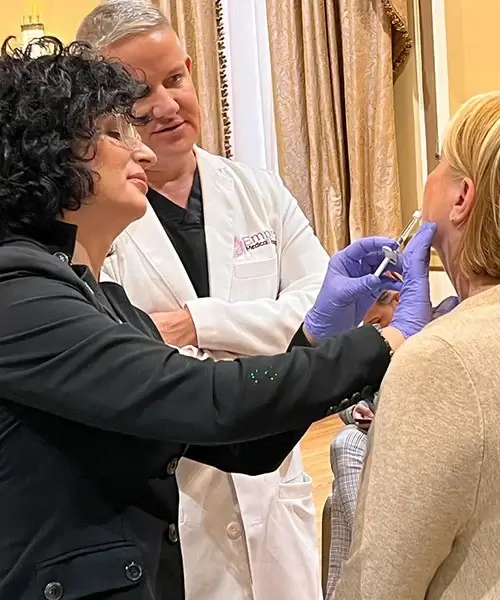How Soon After Botox® Can I Work Out?
By Dr. Stephen Cosentino
PRESIDENT OF EMPIRE MEDICAL TRAINING
Botulinum toxin injection (Botox® injection) is a minimally invasive procedure with more than a dozen FDA-approved medical and cosmetic uses. It’s generally regarded as safe and effective when given by a licensed, trained provider.
Yet Botox does have some side effects, such as drooping eyebrows and eyelids. Certain post-treatment activities increase these risks, which is why it’s so important to listen closely to your provider’s instructions.
One instruction you’re likely to hear is to avoid strenuous activity or exercise for 24 hours or longer after your injection. If you exercise every day, that’s a long time not to sweat after Botox. Here’s what you need to know (and why).
How Soon Can You Work Out After Botox?
You should be able to work out beginning 24 hours after your Botox treatment, unless your provider tells you something different. Because recommendations can vary based on the treatment area, amount of Botox used, and individual patient factors, it’s critical that you follow the specific post-procedure instructions you received from your provider.
Assuming you’re working with a licensed provider who has completed an accredited Botox training course, they’re the best source of information for your specific circumstances. This is the rule regardless of the injection location or the specific Botox results you’re seeking (i.e., migraine treatment, glabellar line reduction, or something else).
Why the wait? There are several reasons to avoid exercising immediately after Botox treatment:
Excessive Head Movements
Most types of exercise involve repeated head movements and frequent changes in head position. This is a big no-no post-Botox; most providers recommend keeping your head elevated and avoiding sudden head position changes for at least four hours after treatment.
Changes in head position, especially if that means putting your head below the level of your heart, could cause the Botox to migrate from the treated area to other muscle groups, temporarily paralyzing them. That can cause unwelcome, highly visible side effects like drooping eyelids and Bell’s palsy.
Excessive Sweating
Excessive sweating isn’t bad in and of itself, but it increases the risk that you’ll rub your face and put too much pressure on the injected area. That can cause the Botox to migrate beyond the treatment site as well.
Higher Blood Pressure
Exercise raises your blood pressure. Not to dangerous levels, but higher than recommended immediately after Botox treatment. This increases blood flow to the treatment site and surrounding areas, which can cause the already-tender skin there to bruise and swell. These unsightly effects can take several days, even weeks, to disappear.
What You Can Do For Exercise After Botox
You don’t have to lay completely still in a quiet room for a full day after your Botox treatment. Actually, you shouldn’t lay down at all for a few hours — we’ve already seen that it’s important to keep your head elevated after treatment.
While strenuous exercise is out of the question for a day or so after treatment, you can do lower-impact work. Facial exercise is totally fine and may even be helpful for your recovery as it can spread the medication more evenly throughout the treated area (without causing it to migrate beyond). You can also do low-impact leg and arm exercises without weights or heavy resistance.
Here are several low-impact activities that are generally safe to do during the first 24 hours after your treatment:
Light Walking
Easy, relaxed walking is usually fine, as it does not significantly increase blood flow or require excessive head movements. Avoid power walking or jogging, which can raise your heart rate and blood pressure.
Gentle Yoga
Yoga poses that keep your head above your heart, such as seated twists or standing poses, can be done. However, it's important to avoid any inversions or floor-based exercises that require bending over, as this can cause the Botox to migrate to unintended areas.
Light Housework or Gardening
Gentle household tasks or light gardening work are usually safe, as long as they don't involve strenuous movements or putting pressure on the treated areas.
Facial Exercises
Performing gentle facial exercises like light smiling, frowning, and eyebrow raising can actually be beneficial, as they help distribute the Botox evenly throughout the treated muscles.
The Bottom Line
The key is to avoid any activities that significantly increase blood flow, heart rate, or require excessive head/facial movements in the first 24 hours after your Botox treatment. Always follow the specific post-treatment instructions provided by your injector.


